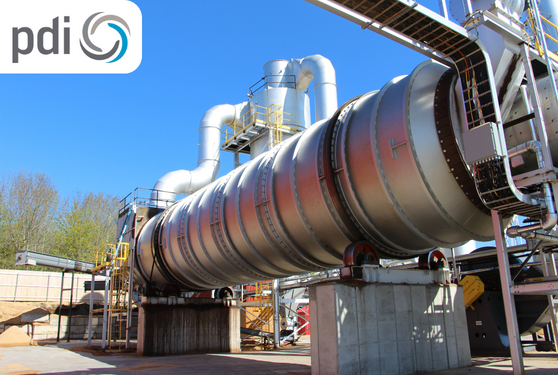
Brought to you by Player Design, Inc (PDI)
Bigger Isn’t Always Better: The Case For Right-Sized Biomass Dryers

February 28, 2024 in Features
By Michael Edgecomb, Director of Engineering at PDI
 (Photo: Jessica Johnson, Marketing Manager at PDI)
(Photo: Jessica Johnson, Marketing Manager at PDI) Traditionally for biomass pellet producers when it comes to rotary dryers the phrase “bigger is always better” drives decision making. However, at Player Design Inc. (PDI), we challenge this idea. Our experience and patented technology prove that right-sized, parallel drying systems not only outperform oversized, single units but also better align with the industry’s core goal of efficient resource use.
The Oversized Problem
Many companies offer biomass rotary dryers that are larger than 18 feet in diameter, and up to 100 feet long.
There is a perception that the customer will save on capital cost—that one large system will have fewer motors, controls, energy sources, etc. and therefore it will be less expensive. The reality is, we can provide right-sized systems in parallel for LESS than you could build a single oversized and inefficient system.
Oversized dryers come with a host of issues:
- Inconsistent Temperature Profile: Achieving a uniform temperature throughout such a large dryer is challenging, leading to inefficiencies1.
- High Variability: Due to their volume, these dryers often process truckloads of material at a time. A lack of mixing leads to significant variability in moisture content2. This causes large process swings, a problem for maintenance and efficiency.
- Increased Pollution: To manage this variability and the inconsistent temperature profile, the inlet temperature is typically much higher than in right-sized dryers. These oversized systems require larger energy systems and operate less efficiently, requiring additional pollution controls.
The PDI Solution: Parallel Systems
PDI’s approach is different. Instead of a design utilizing one huge dryer for high volume production, we offer parallel systems with dryers typically sized at 18 feet in diameter or less, with lengths no more than 70 feet.
Here’s why:
- Consistent Temperature: These dryers are easier to manage and more consistent temperature profile throughout the furnace leads to more complete and uniform drying 1.
- Reduced Variability: Smaller dryers mean less material volume in the dryer at any given time, and this allows for better material mixing and less variability in moisture content2.
- Lower Pollution: Due to more efficient drying and lower inlet temperatures, our systems require fewer pollution controls, aligning with industry sustainability goals, and saving on capital and maintenance costs.
The Bottom Line
According to a study published by the Taylor and Francis Group, “Drying efficiency and product quality of biomass drying: a review. 1” right-sized dryers can improve production by 7-12%. In an industry where margins are thin, that could be the difference between profitability and loss.
Why Choose PDI?
- Turn-Key Pellet Mill Solutions: We manage it all, providing one trusted partner to work with.
- Unique Equipment: Custom-designed drying systems are the beating heart of our business.
- Engineering Intellect: We are a team eager for challenge and are capable of solving complex problems.
At PDI, we know that “bigger isn’t always better.” Using an oversized dryer with super high inlet temperatures increases the pollution to the point you need pollution controls you wouldn’t need otherwise—it’s inefficient. This industry is about two things—being sustainable and making good use of resources. Inefficient dryers aren’t aligned with either of these core goals. Our parallel, right-sized dryers offer a more efficient, sustainable, and cost-effective solution for the biomass and pellet industry. Let us show you why.
Our team has experience engineering and implementing drying systems, energy systems, providing project management services and full-scope engineering from concept to completion for a variety of clients including wood pellets. Turning waste into a product, making improvements to components, or shifting to using renewable resources not only save time and money but save energy and resources. At PDI we provide cost-effective and environmentally impactful sustainable solutions.